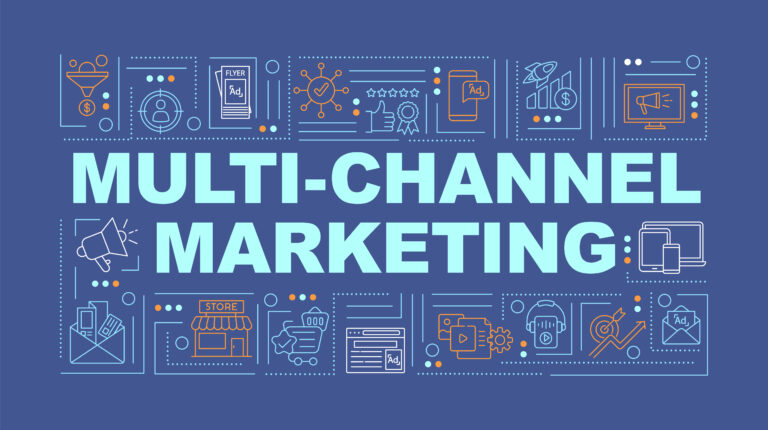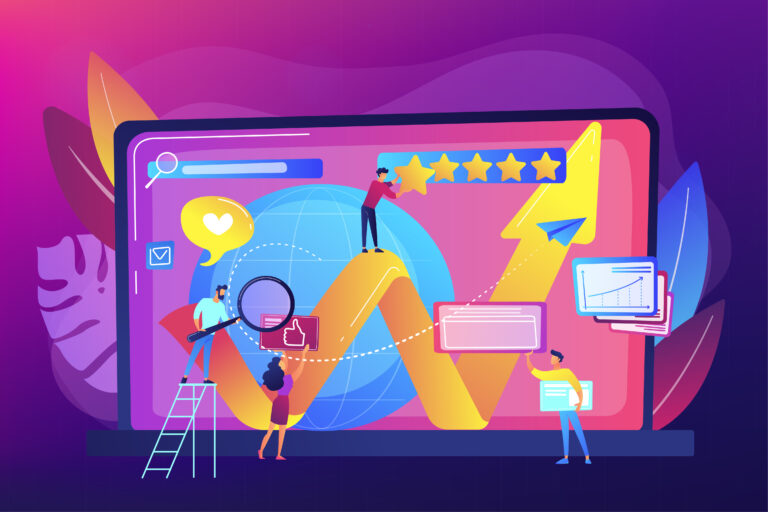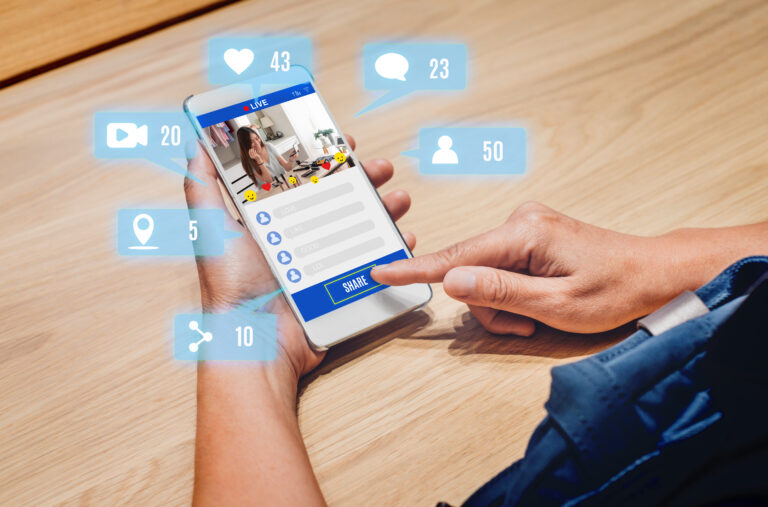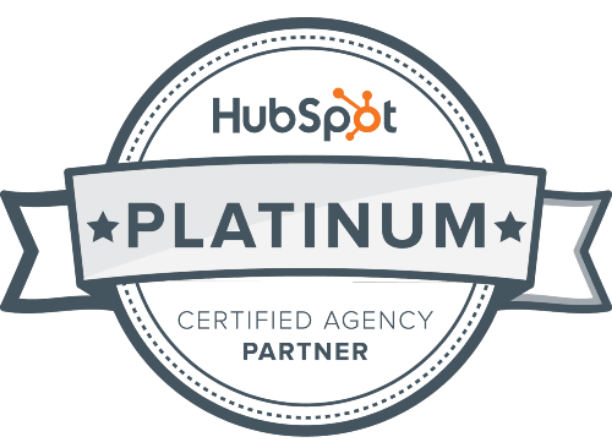Every social media platform has its own particular strengths and quirks, the B2B marketing-friendly LinkedIn included.
Imagine the platforms as characters from seminal 1985 John Hughes film The Breakfast Club. TikTok is Allison—unhinged but hard to look away from. Instagram is Claire, popular but obsessed with image and struggling to be authentic. (Sorry Facebook, you’re grumpy Vice Principal Vernon… and we all know who plays foul-mouthed delinquent John Bender.)
LinkedIn, meanwhile, is focused, hard-working, and too often misunderstood Brian, mostly staying out of trouble and finishing the essay for the whole detention class. Brian may not be up for homecoming king, but when it’s time to get down to business, he’s your guy.
LinkedIn gets downplayed in many broader conversations about the social media universe and its ever-changing place in business-to-consumer and business-to-business marketing. But for B2B organizations—and really any company that puts an emphasis on thought leadership—LinkedIn can be a powerful marketing tool, especially when it’s wielded confidently and consistently.
Unsure about how to make the most out of marketing on LinkedIn? Let’s break it down.
Understanding the LinkedIn Landscape: Finding Your Target Audience
When LinkedIn launched in 2003, it was treated more like a real-time resume repository, or a set-up-then-mostly-ignored online rolodex. By 2023, though, LinkedIn had become a lot more than a place to dump your list of industry awards.
It hit 1 billion users across 200 countries and territories by 2023, and by and large, those folks are highly engaged professionals, with 69% of LinkedIn’s users checking in daily. They’re actively seeking industry-specific insights, professional connections, and expert solutions to their business challenges. They’re sharing needs, stumbling blocks, and success stories and connecting with others who do and want the same.
So if you’re a B2B business offering industry-specific insights and expert solutions, LinkedIn users are primed to love your valuable B2B content and targeted marketing messages. Keywords here, of course, being “valuable” and “targeted.”
As with all things marketing, the key to developing an effective LinkedIn marketing strategy starts with understanding who you want to reach, their specific needs and pain points, and how you uniquely address all of them, then building a machine that broadcasts your strengths.
Step 1: Optimizing Your LinkedIn Company Profile
It may seem obvious, but before you start inviting people in for an office tour, it’s important to get the place set up in a way that accurately conveys your expertise, professionalism, focus, and culture. That means fleshing out and optimizing your LinkedIn company profile.
LinkedIn, like all social media platforms, has plenty of how-to content on the concrete steps needed to set up your company page.
The important stuff:
Add a compelling tagline that captures the heart and soul of your brand and your unique value proposition.
Write an “about us” description that’s engaging and keyword-rich—a virtual elevator pitch that instills confidence, sparks curiosity, and makes it likely that you’ll get found by people searching for what you do.
Add a cover photo that grabs attention and aligns with your branding.
Flesh out your presence by featuring case studies, awards, and testimonials that underscore your expertise.
If you’ve already done your core branding work, you’ll have most of this in hand, and just might need to edit assets for character count and aspect ratio. If you haven’t already established brand standards and shaped a brand book to define and refine them, contact Snapshot about branding—it’s a marketing need we tackle often and well.
Expanding Your Network With LinkedIn Groups
If you build it, they will… not do anything, really, unless you take steps to make connections and demonstrate value.
When starting from zero with a LinkedIn company page, your own team is always a great place to start seeding a community. Ask your employees to follow and share the page to their LinkedIn feed, if they’re comfortable. Don’t try to force anyone—that’s lousy company culture in action. If you’re building a business around collaboration and support, though, your employees will likely want to do what they can to further your LinkedIn reach.
As you get established, try engaging with industry groups where your target audience congregates. It’s easy to search for appropriate groups on LinkedIn—start with keywords that are relevant to your business and industry and explore the results. There are large and active groups in just about every corner of the business-to-business (and business-to-consumer) world. Search and you’ll find LinkedIn groups devoted to behavioral health, Caterpillar dealer expertise, community banking, and on and on.
Online community etiquette applies, of course—don’t join these groups to hard-sell. Participate in discussions, share insightful comments, answer questions—become a valuable resource and illustrate how your business is an important voice in the discussion. Show, don’t tell. It takes time and effort, but the value is there.
B2B Marketing with LinkedIn Sales Navigator
When you’re ready to move beyond beginner mode on LinkedIn, LinkedIn Sales Navigator is a popular, powerful subscription tool used by B2B marketers and sales professionals spanning industries. It takes the basic research and connection capabilities of a free LinkedIn account and opens all the secret doors inside the platform, revealing deeper insights and connecting you with the high-value prospects who are most likely to care about what you make or do.
What many B2B professionals use LinkedIn Sales Navigator to do:
Identify decision-makers within target accounts, track their activity, and engage them with personalized outreach.
Gain deeper audience insights, inform content strategy, and laser-focus targeting for digital advertising campaigns.
Uncover qualified leads and put focus effort on building connections.
Sales Navigator features are expansive and extensive, especially for B2B marketers. With its advanced search filters, you can stretch beyond basic keywords to target prospects by job title, company size, industry, and past interactions with your business or brand. You can tap personalized lead recommendations that are based around your ideal customer profile. You’ll get real-time alerts about relevant updates from key contacts, making timely engagement easier and more impactful. And collaboration tools will help everyone on the team stay aligned on collective LinkedIn B2B efforts.
LinkedIn Sales Navigator is a premium service, so there’s a monthly investment (with pricing tiers). But a Forrester Consulting study found that, with a three-year LinkedIn Sales Navigator contract, ROI for a data-aggregated “composite customer” would be 312%, with the tool “paying for itself” in under six months. It might not be for every small business, but plenty of B2B players choose to put Sales Navigator in their digital toolbox.
Content Marketing for Lead Generation: Building A B2B Success Engine
Now we get to the place so many digital marketers really love to inhabit: making stuff. Content.
Social media platforms, including LinkedIn, run on content. So the key to successful B2B marketing on LinkedIn is creating and sharing valuable content, consistently.
There are a few particulars and secret handshakes unique to LinkedIn content, B2B or otherwise. But you start with the fundamentals: understanding your target audience’s pain points and crafting content that addresses them directly.
If you’ve built your business around marketing and sales fundamentals, you’ve probably already conducted surveys and analyzed customer data to identify your audience’s specific challenges and the types of information they want and need. If you haven’t, the process of building a LinkedIn content strategy is a great excuse to do that vital work.
With problems and pain points and wants and needs in hand, we can become content-generating knights in shining armor, building a content strategy around actionable tips, tightly focused industry insights, and personality-rich thought leadership pieces that provide solutions and highlight expertise.
Breaking that down into a LinkedIn content step-by-step approach:
Refine your target audience: Who is your core, key customer? What are their demographics, job titles, and industry pain points?
Identify your content goals: In a perfect world, does your LinkedIn content generate leads, drive website traffic, increase brand awareness, or a mix of several?
Shape a content calendar framework: Identify a realistic, manageable cadence and plan a monthly framework around it. Make sure it’s based around three things: that key customer’s needs, your unique proposition, and those specific goals you’ve set. Many creators find it helpful to build out “content pillars” to maintain breadth and focus.
Plan your content mix: Building out a varied blend of content types and topics keeps your page from feeling repetitive, gives you the data you’ll need to test and tweak, and helps you stay accountable to goals.
LinkedIn supports text posts, single-image posts, videos, image carousels (PDF format is best here, to make your infographics shine), blog content (“Articles” and “Newsletters”), and LinkedIn Live sessions. Test as many content types as you can, shaped around your resources and goals.
Bring your brand’s voice and tone, but read the room: Personality works on LinkedIn too, but it’s worth spending some time getting to know the general tone on the platform. It’s a place where professional, informative, and supportive content succeeds; working blue, wild meme-ing, and contrarian arguments aren’t as popular on LinkedIn as they are on other social platforms.
Organic Content Distribution Tips: Amplifying Your Voice on LinkedIn
Grabbing organic reach on social media platforms has been difficult for a long time, and it’s only getting harder. But you can reach more B2B eyeballs by using these LinkedIn-specific tactics.
Engage with comments and replies: LinkedIn’s algorithm loves conversation, so replying to comments on your own posts and on other users’ posts will boost your account’s visibility. More importantly, though, doing this helps you foster discussion and build relationships with potential leads.
Leverage employees appropriately: Encourage the people on your team to share company page content to their feeds, when it resonates and where they want to. Regular reminders help. (Dictates don’t.)
Post consistently and strategically: The LinkedIn algorithm also loves consistency, so when you maintain a regular, consistent content calendar, you’re more likely to keep the robots on your side. Plus you’ll stay fresh in your audience’s minds.
Analyze and optimize: Make sure you regularly track your content performance so you can see what does and doesn’t work, and adjust your content strategy based on the results.
Don’t ditch hashtags… yet: In late 2023, there was a lot of discussion about LinkedIn hashtags going away—and the way they’re used on the platform has certainly changed. But at least for the moment, hashtags remain a valid way to jump into broader conversations and get found by topically interested users.
A rule of thumb for hashtags across all social media platforms: What works on one doesn’t necessarily work on another. It’s gotten a lot harder to effectively research hashtags on LinkedIn, but a fundamental difference seems to be holding true: While specificity breeds better reach on Instagram, broader hashtags help on LinkedIn. Think #banking instead of #communitybankersarethebest2024.
Paid Advertising on LinkedIn: Reaching Further with Laser Precision
Organic content and organic reach are crucial on LinkedIn (and all other social platforms) for establishing your brand’s story and building trust. But paid social can amplify your efforts and target specific segments within your audience with pristine precision.
With LinkedIn Ads, targeting can zero in on demographics, job titles, company size, and more. You can base ads around goals—like website traffic, lead generation, or brand awareness—then test and tweak to learn and grow. (A/B testing is a great way to suss out what resonates best with your LinkedIn B2B audience.)
LinkedIn is among the more expensive social media ad platforms (its average cost per click in 2023 was more than five times Facebook’s). But we all know that “place” is one of marketing’s core principles, and when you’re a B2B business, LinkedIn is certainly a social media place your people are likely to hang out regularly.
Snapshot Makes B2B Marketing on LinkedIn Easy
Not every business is set up (or wants) to take the full spectrum of LinkedIn marketing in-house. That’s where a marketing partner like Snapshot comes in.
Our digital marketing specialists lead LinkedIn marketing—from organic content creation and management to LinkedIn ads strategy and deployment—for a broad range of clients, including B2B organizations. If you’re looking for a LinkedIn marketing partner, we’d love to make it easy for you and your team.
Contact Snapshot, tell us about your social media marketing needs, and we’ll shape a solution.








